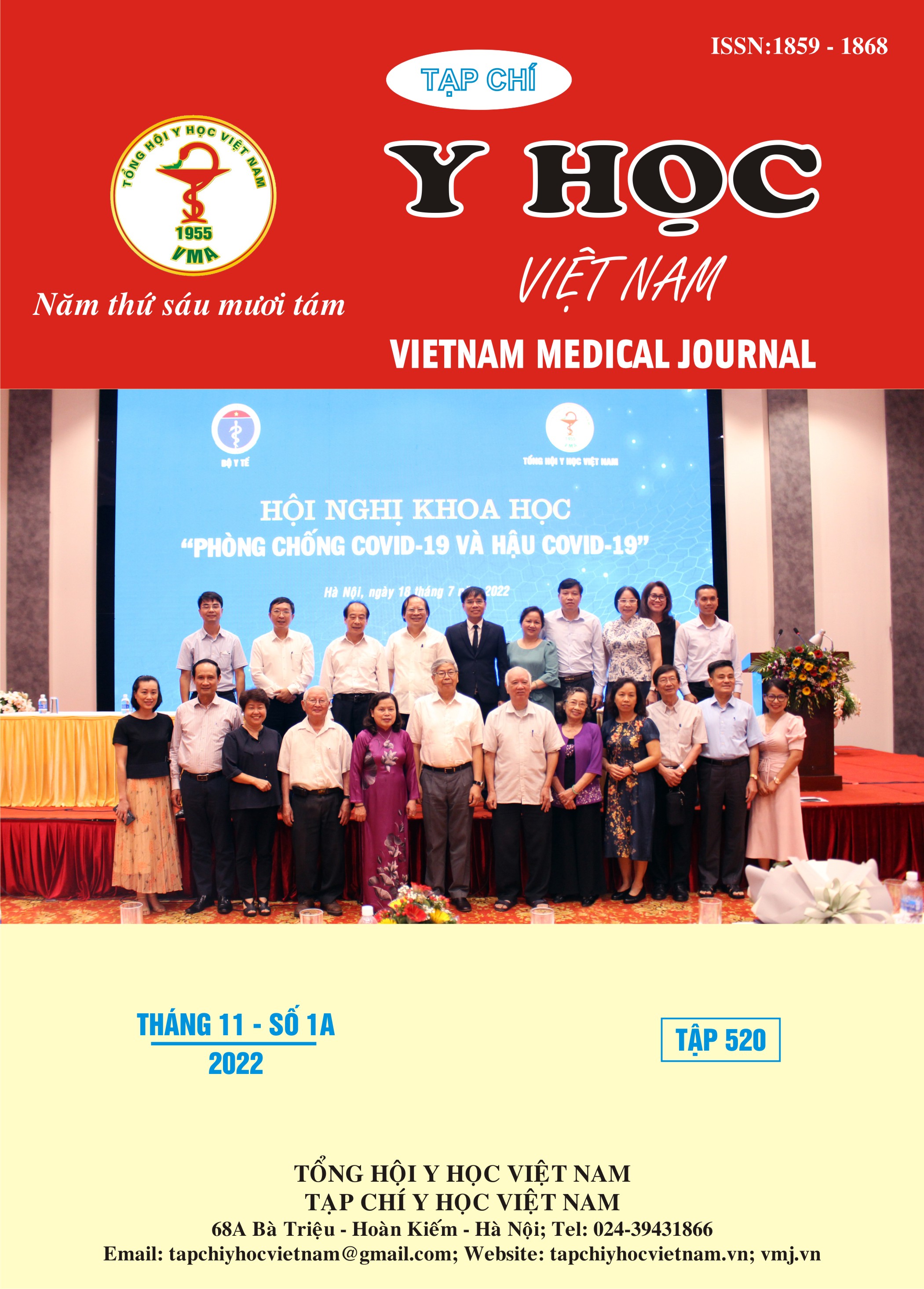ĐẶC ĐIỂM LÂM SÀNG VÀ CẬN LÂM SÀNG CỦA BỆNH VIÊM KHỚP CỘT SỐNG Ở BỆNH NHÂN NỮ GIỚI
Nội dung chính của bài viết
Tóm tắt
Mục tiêu: Mô tả đặc điểm lâm sàng, cận lâm sàng của bệnh viêm khớp cột sống ở bệnh nhân nữ giới. Phương pháp và đối tượng nghiên cứu: Nghiên cứu hồi cứu, mô tả cắt ngang 54 bệnh nhân nữ chẩn đoán Viêm khớp cột sống theo tiêu chuẩn ASAS 2009 và ASAS 2011, điều trị nội trú tại Trung tâm Cơ xương khớp bệnh viện Bạch Mai từ tháng 9/2021 đến tháng 7/2022. Kết quả: Tuổi trung bình của bệnh nhân nữ VKCS là 38,52±13,27 tuổi, thời gian chẩn đoán muộn là 4,76±6,24 năm. Viêm cột sống dính khớp là bệnh chiếm tỷ lệ cao nhất (37,0%), sau đó đến viêm khớp vảy nến (25,9%) và thấp nhất là viêm khớp phản ứng (1,9%). Có 85,2% bệnh nhân có biểu hiện đau ở các khớp ngoại vi và biểu hiện chủ yếu ở chi dưới. Đau cột sống cổ được ghi nhận với tỷ lệ cao. Độ giãn CSTL trung bình là 3,61±1,84 cm. Vảy nến là triệu chứng ngoài khớp thường gặp nhất. HLA-B27 dương tính chiếm 64,8%. Nồng độ CRP trung bình là 4,51±5,47mg/dl. Các bệnh nhân chủ yếu có mức độ hoạt động bệnh cao (42,6%). Có 62,4% bệnh nhân VKCS thể trục có Xquang khớp cùng chậu thỏa mãn tiêu chuẩn New York sửa đổi năm 1984. Kết luận: Phụ nữ chẩn đoán VKCS có điểm giống và khác nhau trong biểu hiện bệnh khi so sánh với quần thể chung và so sánh với nam giới. Nhận biết các điểm giống và khác nhau đó giúp các bác sĩ chẩn đoán bệnh sớm hơn và cải thiện việc quản lý bệnh VKCS ở nữ tốt hơn.
Chi tiết bài viết
Từ khóa
Viêm khớp cột sống, nữ giới
Tài liệu tham khảo
2. Jovaní V, Blasco-Blasco M, Ruiz-Cantero MT, Pascual E. Understanding How the Diagnostic Delay of Spondyloarthritis Differs Between Women and Men: A Systematic Review and Metaanalysis. The Journal of Rheumatology. 2017;44(2):174-183. doi:10.3899/jrheum.160825
3. Kishimoto M, Yoshida K, Ichikawa N, et al. Clinical Characteristics of Patients with Spondyloarthritis in Japan in Comparison with Other Regions of the World. The Journal of Rheumatology. 2019;46(8):896-903. doi:10.3899/ jrheum.180412
4. Lee W, Reveille JD, Weisman MH. Women with ankylosing spondylitis: A review. Arthritis Care & Research. 2008;59(3):449-454. doi: 10.1002/art.23321
5. Roussou E, Sultana S. Spondyloarthritis in women: differences in disease onset, clinical presentation, and Bath Ankylosing Spondylitis Disease Activity and Functional indices (BASDAI and BASFI) between men and women with spondyloarthritides. Clin Rheumatol. 2011;30(1): 121-127. doi:10.1007/s10067-010-1581-5
6. Kavadichanda CG, Geng J, Bulusu SN, Negi VS, Raghavan M. Spondyloarthritis and the Human Leukocyte Antigen (HLA)-B*27 Connection. Frontiers in Immunology.2021;12.
7. de Jong H, Paramarta J, de Winter J, Baeten D, van de Sande M. Differences between females and males in axial spondyloarthritis: data from a real-life cross-sectionalcohort. Scandinavian Journal of Rheumatology. 2020; 49 (1):28-32 doi:10.1080/ 03009742.2019.1627410


